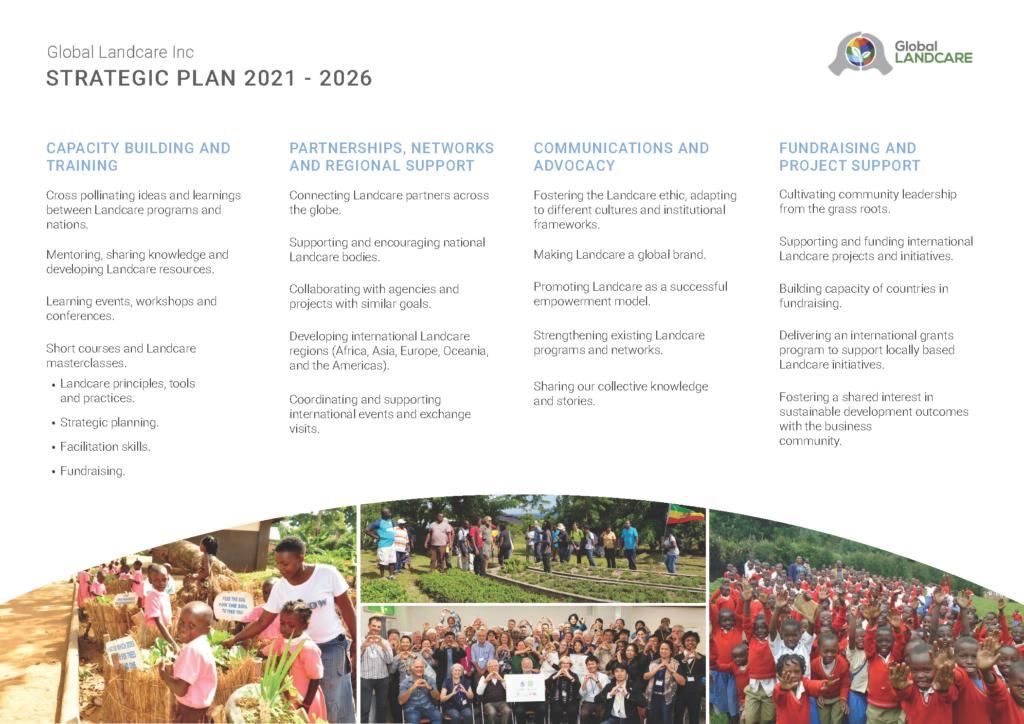GL Newsletter August 2021
Table of Contents
From the Chair…
So very proud of my team at Global Landcare. Terrific to get a COMMENDATION for the Australian Government Partnerships for Landcare Award at the Australian National Landcare Awards in August 2021.
Our success is based on a long history of friendships and partnerships, mentoring, training, incredible dedication and support from all our members and funding bodies from across the world. This one is for all those who have contributed in any way over many years!
I am also very pleased to present our Strategic Plan. A huge thank you to the team for pulling this together and for all our members who contributed. This will set our direction for the next five years.
The Global Landcare Program is running its Spring 2021 Small Grants Program. See details below. A huge thanks to our donors who enable us to continue our work. Read on to find out all the details!
Andrea Mason
![]()
Global Landcare Strategic Plan, 2021 – 2026
Background
Global Landcare began in 2020, with many of its members having been involved in Landcare at policy, program, and operational levels for more than 30 years in various landscapes across the globe. Many bring international, regional, national and grassroot experiences in agricultural, forestry and environmental management.
All of this is possible through a global network which facilitates shared commitments, strategic partnerships, collaborations, and the provision of resources (knowledge, skills, information, training etc.) to deliver capacity building at a local, regional, national, and global level. Landcare develops this kind of network.
Global Landcare encourages more investment to be made in social infrastructure and on-ground action through Landcare, as a mechanism to help achieve the Nationally Determined Contributions (NDCs) for mitigation and adaption linked to climate change.
The international Landcare networks – the Secretariat for International Landcare (SILC), Australian
Landcare International (ALI) and Landcare International (LI) united to form Global Landcare in October 2020.
Statement of purpose
Our global network exists to promote, demonstrate, and strengthen Landcare values and approaches for local, community-driven solutions for protecting, managing, and enhancing sustainable management of natural capital assets.
Vision
People working together restoring and creating resilient landscapes and waters and building healthy inclusive communities.
Mission
Mobilising resources globally (people, knowledge, skills, models, networks, and funds) to support communities promoting and adopting the Landcare approach.
Principles of how we work
(There is a list of principles that guide Global Landcare activities. These are further organised and detailed as themes and focus areas of work
Strategic directions
A survey in 2021 asked members of the GL community to determine their priorities and aspirations for Global Landcare. The following four themes emerged:
- 1. Capacity building, training research and documentation
- 2. Partnerships, networks, and regional support
- 3. Communications, advocacy, and outreach
- 4. Fundraising and project support.
Memberships are now due for renewal!
It’s the new financial year and it’s time to renew your Global Landcare membership or join up for the new year.
Your official membership support is still essential for us to operate our Global Landcare Program, maintain The ALI Fund and for you to participate in our Annual General Meeting! Remember – Membership is FREE but why not support our Global Landcare Program through a DONATION. We would really appreciate some financial support … if you can spare it … simply add it to your membership form.
Donations of $AUD2 or greater are tax deductible in Australia.
Spring 2021 Small Grants Program is NOW OPEN!
Small grants program – provision of $500 (Australian) grant to support eligible Global Landcare activities.
Projects eligible for funding include:
- – on-ground works (such as tree planting, agricultural improvements, forest protection, soil conservation).
- – infrastructure such as local nursery, garden plots, water systems, protective shade and fencing.
- – capacity building such as training courses, visits to other Landcare groups.
Closing Date: Sunday 3rd October 2021
Want to know who we supported in 2020? See 2020 GL Small Project Grants below.
2021 National Landcare Conference
More than 3000 people came together for Australia’s 2021 National Landcare Conference. More than 60 speakers presented insightful and informative content, and their videos and presentations are now available online, including the conference posters.
You can use the Education Resources for training and development, and capacity building in your community. There is a diversity of content suitable for people interested in sustainable land management and conservation activities on their farm or land, in an urban environment, along the coast or in their backyard. Watch the videos and be inspired by what you can do in your community.
The 2021 Conference resources are available online via the Landcarer site. Please sign up or login to Landcarer.com.au (free) and then join the Conference Education Hub for longterm access to these resources. You can read more about Landcarer
https://landcareaustralia.org.au/landcarer-community/.
In particular, you might enjoy the presentation from Mary Johnson and Clinton Muller about the impact of Landcare.
See
https://landcarer-1.s3.ap-southeast-2.amazonaws.com/Landcare_Impact_seg3.mp4
Save the date for the 2022 National Landcare Conference, which will be in Sydney, and online event, Tuesday 23 to Thursday 25 August, 2022.
Building resilience in local communities:
The wellbeing benefits of participating in Landcare (KPMG)
This report has recently been released. Landcare Australia partnered with KPMG Australia through its Pro Bono @KPMG program to carry out this research project.
“…if I had known how much joining Landcare would help me [mentally], I would have joined much sooner…it had an instant effect on me…it was something I’d been looking for but didn’t know existed…”
From the foreword: While Indigenous Australians have always understood the importance to wellbeing of connection to country, the value of community connection for everyone is inarguable. This report demonstrates that people who are well-connected are healthier and happier and have much more opportunity to lead rich, meaningful lives. A sense of belonging and social connectedness – offering extra purpose and meaning to everyday life.An additional benefit articulated in this report is the role Landcare plays in individual and community resilience, and how that in turn helps communities recover from natural disasters. Our research shows that 46 per cent of survey respondents reported volunteering with Landcare led to an improvement in their mental resilience and ability to manage challenges.
 Of those impact areas which have been included in the final impact framework and model, the potential economic benefits are very important. Even when taking the most conservative ‘low’ scenario considered in our modelling, there is a $1,347 per person per year economic benefit from participation in Landcare. When applied to the entire estimated Landcare population of approximately 142,000 people, that generates a total economic benefit of over $191 million dollars per year. It is important to note that these numbers are based on not only the most conservative scenario, but they do not include any calculation of the environmental benefits (e.g. improved conservation outcomes, land productivity and yields). Finally, as noted above, this study clearly shows that even those who have a modest involvement in Landcare, still experience notable benefits.The full report is available at https://mcusercontent.com/0b85736dd0fed2a4fbe4362bd/files/23c1e8d2-5a7f-9f94-df75-522c8195f5db/Wellbeing_benefits_participating_landcare_Report_KPMG_2021.pdf
Of those impact areas which have been included in the final impact framework and model, the potential economic benefits are very important. Even when taking the most conservative ‘low’ scenario considered in our modelling, there is a $1,347 per person per year economic benefit from participation in Landcare. When applied to the entire estimated Landcare population of approximately 142,000 people, that generates a total economic benefit of over $191 million dollars per year. It is important to note that these numbers are based on not only the most conservative scenario, but they do not include any calculation of the environmental benefits (e.g. improved conservation outcomes, land productivity and yields). Finally, as noted above, this study clearly shows that even those who have a modest involvement in Landcare, still experience notable benefits.The full report is available at https://mcusercontent.com/0b85736dd0fed2a4fbe4362bd/files/23c1e8d2-5a7f-9f94-df75-522c8195f5db/Wellbeing_benefits_participating_landcare_Report_KPMG_2021.pdf
The Global Landcare Program
Small Grants Projects 2020
11 grants were allocated in February 2020. They can be checked out at https://globallandcare.org/2020-global-landcare-program/
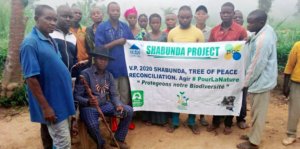 The small grants project run by GIERI in the DRCongo had as its main objective to generate new Landcare groups with the indigenous communities of Shabunda and the Plaine de la Ruzizi in the Congo with particular emphasis on the regeneration of forests, protection of the soil to fight against climate change and by introducing new species of fertilizing trees especially in the Ruzizi plain. And it seems 200 pupils, 15 smallholders, 50 households benefited from involvement in the project.
The small grants project run by GIERI in the DRCongo had as its main objective to generate new Landcare groups with the indigenous communities of Shabunda and the Plaine de la Ruzizi in the Congo with particular emphasis on the regeneration of forests, protection of the soil to fight against climate change and by introducing new species of fertilizing trees especially in the Ruzizi plain. And it seems 200 pupils, 15 smallholders, 50 households benefited from involvement in the project.
“We were able to introduce this program during the conference of 4 per 1000 Event on the World Environment Day online (European Green Week) of which we were panelists and we had to talk about the philosophy of landcare and the work we do with the forest communities.”

The Landcare Foundation of the Philippines project worked with youth, students and women.
“We made a Vegetable Demonstration area and the same time a community Vegetable garden during Covid19 health crisis. We Taught young students on how to plant and produce vegetables for their tables. We also involved the women parents to be part of the activity and we partnered the Barangay Local government Unit on their Health and Nutrition Program under Gender and Development Program.The Municipal Agriculture Office also Nominated the said initiative and become a contender on a Provincial Contest for Youth on Agriculture category, we won as 3rd place over 11 contenders.”
Community Gardens Grants
The Community Gardens projects are also listed at https://globallandcare.org/community-gardens-program/
Hope for Kids, Zimbabwe

The project at the Chitakatira Secondary School managed to meet and train the School Focal persons (two teachers) and the community Headman and Councillor on the concept of nutritional gardens for the benefit of the students and the community.
“The funds we received from Global Landcare has helped us implement the school based garden through the purchase of fencing materials from Harare, 4watering cans and seedlings which include onions, tsunga, cabbage, rape, tomatoes and covo. The school garden is approximately 220sqm which is quite big to benefit a lot of children. The school garden will have 20 students working on the garden at any given period including some of beneficiaries in our Hope for KIDS Zimbabwe education project ie students that we pay for school fees at the school, the most needy of the orphans in the area. The land was cleared and what is left and is to start the ploughing process – after removing the trees to give way to the garden. The school also managed to put up some solar panels and a submersible pump to help with pumping water to the gardens.”
Many of the projects suffered from the covid problems and so the end date was extended to June 2021. Most have now reported on their achievements.
From the Newsletters…
International Day for the Conservation of the Mangrove Ecosystem
Each year July 26 is International Day for the Conservation of the Mangrove Ecosystem (https://en.unesco.org/commemorations/mangroveday)
UNESCO tells us:
Mangroves are rare, spectacular and prolific ecosystems on the boundary between land and sea. These extra ordinary ecosystems contribute to the wellbeing, food security, and protection of coastal communities worldwide. They support a rich biodiversity and provide a valuable nursery habitat for fish and crustaceans. Mangroves also act as a form of natural coastal defense against storm surges, tsunamis, rising sea levels and erosion. Their soils are highly effective carbon sinks, sequestering vast amounts of carbon.
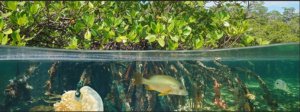
The Tropical Research and Conservation Centre, TRCC in collaboration with Akwa Ibom State Department of Forestry and Environmental; Nigerian Landcare took the opportunity to raise awareness of the importance of mangrove ecosystems as “a unique, special and vulnerable ecosystem” and to promote solutions for their sustainable management, conservation and uses. They told us:
Nigeria’s mangrove ecosystem is the largest in Africa according to the UN Environment Programme (UNEP) and is said to be the third largest in the world. Mangrove ecosystem offers huge ecological, biological, environmental and socio-economic benefits. The benefits offered by mangroves cannot be overemphasized. Nigerian mangroves together with the creeks and rivers are a major source of food and livelihood for many people. The ecosystem also plays important role in climate change mitigation because of its high blue carbon sequestration potential.
Text and images from a newsletter entitled “2021 International Day for Conservation of Mangrove Ecosystem, 26th July, 2021”.

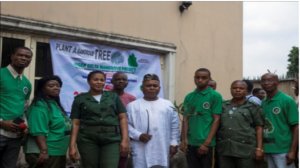
Before leaving the get-together, participants made some commitment to increase participation in mangrove planting for ecosystem restoration and ecosystem conservation. TRCC tells us:
“The importance of protecting mangroves is reflected most clearly in Sustainable Development Goal (SDG) 14, which focuses on sustainably governing our oceans and coasts and recognizes mangroves’ immense value to local communities. Sustaining mangrove forests also supports the achievement of many other SDGs, including eliminating poverty and hunger (SDG 1 and SDG 2), ensuring livelihoods and economic growth (SDG 8), taking actions against climate change impacts (SDG 13) and halting biodiversity loss (SDG).”
There is an interesting video about mangroves for all at
https://www.youtube.com/watch?v=cwTZhyA57mA
For more about the local Nigerian activities, see
www.tropicalconservationcentre.org and www.tropicacentre.org
Kenya National Landscape Restoration Scaling,
Virtual Conference – Report now available
The Regreening Africa Team and the Conference Planning Committee are sharing the Kenya National Landscape Restoration Scaling Virtual Conference Report
(https://regreeningafrica.org/wp-content/uploads/2021/08/National-Landscape-Restoration-Scaling-Virtual-Conference-Report_1.pdf).
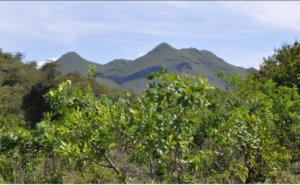
The Kenyan government pledged to restore 5.1 million hectares of degraded land in Kenya by 2030 under the African Forest and Landscape Restoration Initiative (AFR100) and Bonn Challenge. In addition, the 2010 Constitution of Kenya emphasizes the need for achieving and maintaining at least 10% tree cover in the country’s land area. As a result, there are numerous cross sectoral efforts being undertaken towards restoration, spearheaded by multiple stakeholders. But many of these efforts remain fragmented and could benefit greatly from pursuing greater synergies.
The conference was to support Kenya’s attainment of its restoration ambitions and to bring together diverse stakeholders. Over 600 people participated and reflected upon and celebrated the many achievements in the restoration space and identified how these can be amplified. Thus, synergies between initiatives were enhanced and areas for coordinated implementation and monitoring discussed. Mechanisms that will better harness the collective strengths of government with non-government organizations were identified. The conference was arranged around five thematic areas and followed a series of pre-conference webinars. The themes were:
- restoration approaches and practices
- youth and women inclusion in restoration
- movement building and leveraging
- landscape restoration monitoring,
and - entrepreneurship and business approaches to restoration.
The Report is comprehensive. It is divided into four sections. Section one, the structure of the report and the conference background and objectives. Section two describes the conference themes including pre-conference webinars and key outcomes. Section three is the conclusion and section four has details on the sessions and deliberations.
You may find the following resources useful:
- Conference blogs
https://regreeningafrica.org/in-the-news/catalyzing-a-movement-for-expanding-kenyas-landscape-restoration/ and
https://regreeningafrica.org/in-the-news/kenyas-landscape-restorers-commit-to-help-communities-and-government/ - Post conference survey and social media
https://regreeningafrica.org/wp-content/uploads/2021/08/Conference_report_social-media_survey.pdf - Other conference resources
https://regreeningafrica.org/uncategorized/conference-resources/
Regreening Africa are looking forward to following up on a number of the recommendations and actions arising from the conference in the coming months. If you would like to be involved, please reach out to them at mailto:R.Africa@cgiar.org.
Fire and Water, Healing Country and People
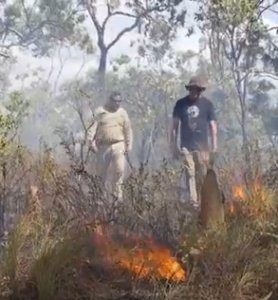
Author, filmmaker and Indigenous fire practitioner, Victor Steffensen was a special guest speaker along with Barry Hunter, for an engaging talk on Country, sharing the advantages and benefits that embracing cultural burn methods can bring to help the Landcare community tackle climate change.
See the video at https://www.youtube.com/watch?v=OBTZvGJXroM
“People are part of the country and that means that if we want to heal landscapes, we’ve got to heal people with the landscape. Australia has evolved over thousands of years, with people burning the right way. People have been part of the evolution of all its ecosystems. That’s what Aboriginal farm management means. It means being holistic, and embracing interconnectivity and opportunities. It’s seeing what’s working with the land, living with the land, being part of the land, and it’s putting people back into the land.”
Family Forestry in Nepal
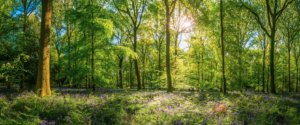
Video Credit: Rajendra Bhatta Please follow the link below for further perusal: https://www.facebook.com/100009399210371/videos/2108378692818751/
The Association of Family Forest Owners Nepal (AFFON) is a voluntary member-based organization of approximately 10,000 family forest households in 61 districts in all seven provinces. As an umbrella platform with aims of ensuring family forest owners’ rights, AFFON advocates for the policy dialogue and empowerment of small and medium land holders.
Small landholding farming communities grow trees on their farmland for their daily needs of fuelwood, fodder, timber, fruits, and medicinal herbs. Nationally, more than 1.3 million households grow approx. 53 million trees under family forestry systems, which supply about 70% of total timber demand of Nepal.
Family forests however are facing several challenges, including policy huddles, lack of recognition by government and donors, difficulties in procurement of quality seedlings, lack of technical skills of farmers and insufficient financial and human resources. The future potential of family forestry will depend on expansion of AFFON’s network for sustainable family forest management. If done properly, AFFON can contribute to restoring degraded land, recharging water reservoirs and groundwater, enhancing carbon sinks, and adapting to climate change.
The AFFON website has many stories, videos and other resources that might be of interest. See https://familyforestnepal.org/
Saving the planet, a paddock at a time
Is there a chance that farmers could sell a product they don’t even have to ship? Having measurable carbon put into the soil by grazing animals and dung beetles is perhaps a no-brainer? The interest in climate change and actions that can be taken are already surprising us. Read about this amazing Victorian farmer’s achievements.
From https://www.basscoastpost.com/environment/saving-the-planet-a-paddock-at-a-time
“As a pioneer of carbon farming, Bob couldn’t be happier. He thinks people – including many people in power – have suddenly “got it. … It’s going to happen … I didn’t think I’d live to see the day.” 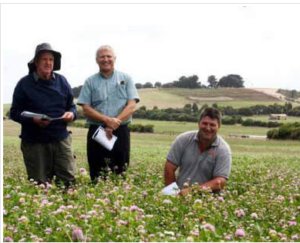
Now into his 80s, Bob is helping to lead a revolution in farming. In August he’ll address 250 farmers at a beef farmers conference in Bairnsdale. Where once the farmers might have listened reluctantly – or even skipped a session related to climate change – this time he can expect a captive audience. …
When Bob and Anne bought Bimbadeen in XX it was covered in tea-tree. “We asked the Department of Agriculture what we should do. They said to plough it all in and that built up a huge amount of organic matter in the soil by accident. “We were a bit ahead of our time. At an early stage we realised smaller paddocks were the way to go. We divided our paddocks up into 10ha paddocks, and they’re now about 2ha. “You put the cattle in a paddock, graze it down then move them out. We’ve introduced dung beetles to increase the microbial activity. The paddock creates carbon by photosynthesis. It’s going back into the soil.” More than two decades of research convinces him that most farms actually have a balance of carbon that they could sell as offsets if an Australian government introduced carbon trading. With the leaders of the US and UK stepping up the pressure on Australia, that seems inevitable.” Bob Davie and Roy and Mark Roberts at Bimbadeen.
Improving livelihoods in conflict-vulnerable areas
(Date released, 28 June 2021, ISBN 978-1-922 635-10-5, Publication Code MN213, Author Noel Vock)
“This book, “The facts of LIFE: An introduction to a new model of agricultural extension for conflict-vulnerable areas of the Philippines”, is the culmination of nearly eight years of work to develop and validate what DOST-PCAARRD recognises as the only agricultural extension model in the Philippines that has been specially developed for conflict-vulnerable areas. It offers practical guidelines to local government officials, community
organisers and anyone interested in understanding how LIFE works.
It is hoped that the LIFE model will help overcome the barriers to agricultural extension caused by conflict and lead to improvements in the livelihoods and wellbeing of our farming and fishing communities. Improved livelihoods and wellbeing are essential if we are to avoid a cycle of instability and resentment, and thus make lasting peace and reconciliation possible.”
Available from
https://www.aciar.gov.au/sites/default/files/2021-06/MN213_accessible_art_compressed_MG_230621.pdf
(7.51 mb)


